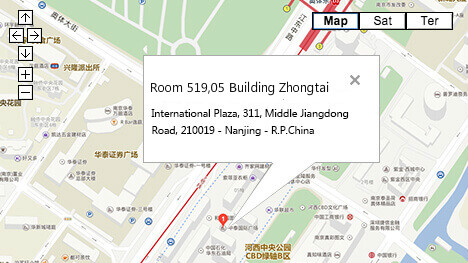Some clients have asked us “what is a certificate of conformity” over the years, and…
Factory Audit Tips: 10 Signs of a Bad ISO 9001 Implementation
BY RENAUD ANJORAN
A few days ago, I wrote about the basics of ISO 9001 — both the standard and the certification/registration process.
I got some comments on Linkedin about how useless ISO 9001 is. It is useless indeed in many manufacturing facilities I have visited, and the key reasons are:
- Poor implementation (because managers want to take shortcuts), combined with
- Inadequate auditing (lack of understanding of processes and of what is important, and lax enforcement of the standard by many registrar bodies)
Now, how to spot a bad ISO 9001 implementation in a factory? There are many signs, and I listed ten of them below…
1. The most basic and straightforward ISO 9001 requirements are not followed
Here is a simple example that I always look for in any factory. ISO 9001 requires that:
The organization shall ensure that the [monitoring and measuring] resources provided:
- a) are suitable for the specific type of monitoring and measurement activities being undertaken;
- b) are maintained to ensure their continuing fitness for their purpose.
The organization shall retain appropriate documented information as evidence of fitness for purpose of the monitoring and measurement resources.
If you see a caliper without a calibration certificate, and the quality manager doesn’t know what to say for his defense, it means they don’t even pay attention to basic requirements. There are many such “signals”, but this one is really a 5-second test.
2. The templates are very generic and haven’t been customized to the company’s processes
The world is full of ‘turnkey consultants‘ who can ‘adapt’ an existing system in any company… or so they pretend. In most cases, all the ‘adaptation’ work is done in a hurry and with no depth. That’s useless and it even hurts the company.
What is the best approach? To develop the quality management system from the ground up and by following a logical sequence (identify customers’ needs, identify main risks & opportunities, set objectives, define and document processes…).
3. Key documents are printed and kept in a drawer
If they are printed, they are (usually) not alive. For example, the approved supplier list probably needs to be updated regularly.
If they are kept in a drawer, they are not available to employees and they are not used.
When I see that, it screams “these documents were only prepared for show, for those auditors who never scratch below the surface”.
4. Employees refer to “that ISO stuff” and see it as paperwork
Again, it means it is not the way they do business. They see it as a way to get a certification.
Again, this hurts the company. Employees learn how to play games, cover up the truth, and so on. These are not healthy behaviors.
5. All questions about the management system need to be channeled to the quality manager
Is he/she the only one capable of answering?
- What about top management, and internal auditors? Do they have no understanding of the quality management system?
- What about key process owners? Are they unable to see how their work relates to the overall system?
6. People need to search for records about their own process
If they work on a certain process and they produce records, they know where to find those records… If they find it hard, it probably indicates that those records aren’t truthful.
7. Nobody looks at the charts on the walls
I remember working in a factory, as a consultant on a specific issue they had. They were going to be audited by a large aftermarket retailer of auto parts the following week. They had already put charts up on the walls with statistics that were complete until the following week! All fake data…
8. Procedures and work instructions are full of text, with no flow charts
Who likes to read a wall of text? Nobody, and especially not operators.
Whenever possible, at Sofeast, we have drawn flow charts to illustrate what to do. It is visual and easy to grasp. It speeds up training and improves compliance, but also it engages employees much better (they ask about special cases, etc.)
9. Flow charts are not logical
This is quite common, it seems. It means that two things happened:
- The person drawing the flow chart did not pay much attention to it
- Nobody read it carefully and provided feedback
10. There is no list of open issues, with assigned to-do tasks
I admit this one is a bit controversial. This is not a must. However, I am wondering how a company can keep moving ahead (driving ‘continual improvement’) without an open issues list, or another structured form or keeping track of who needs to do what.
—
What do you think?
Any other clear signs you can share that something is not right?
From: qualityinspection



This Post Has 0 Comments